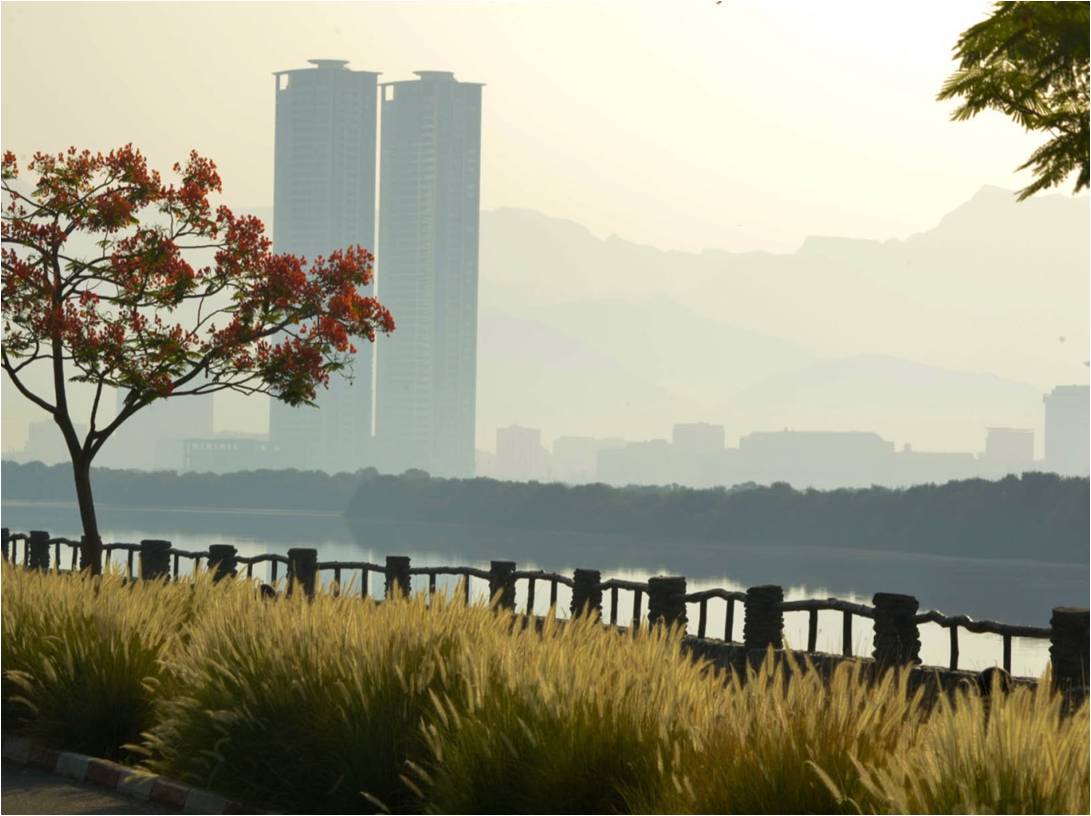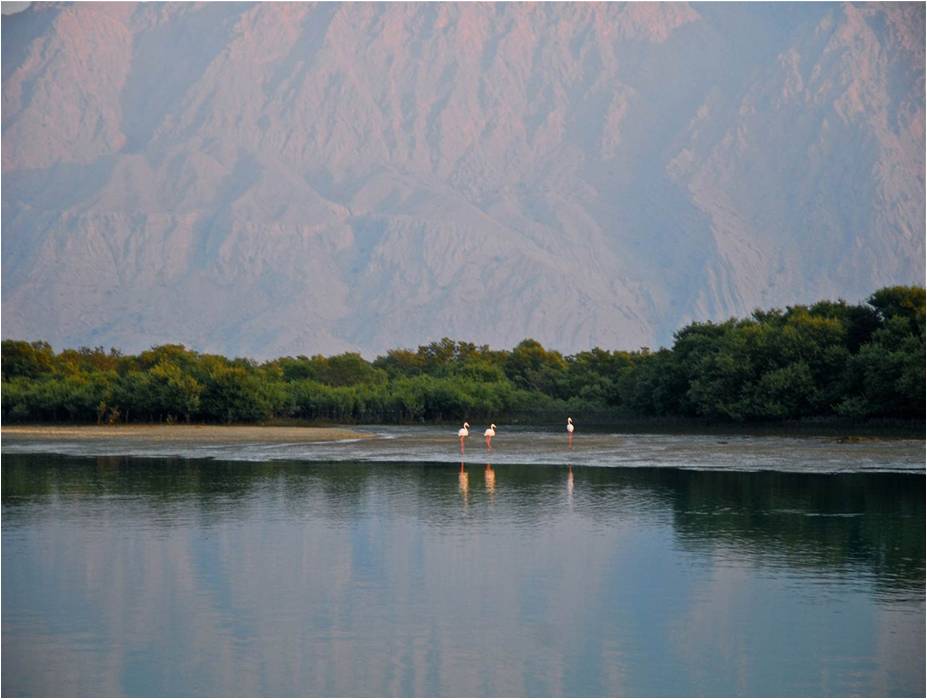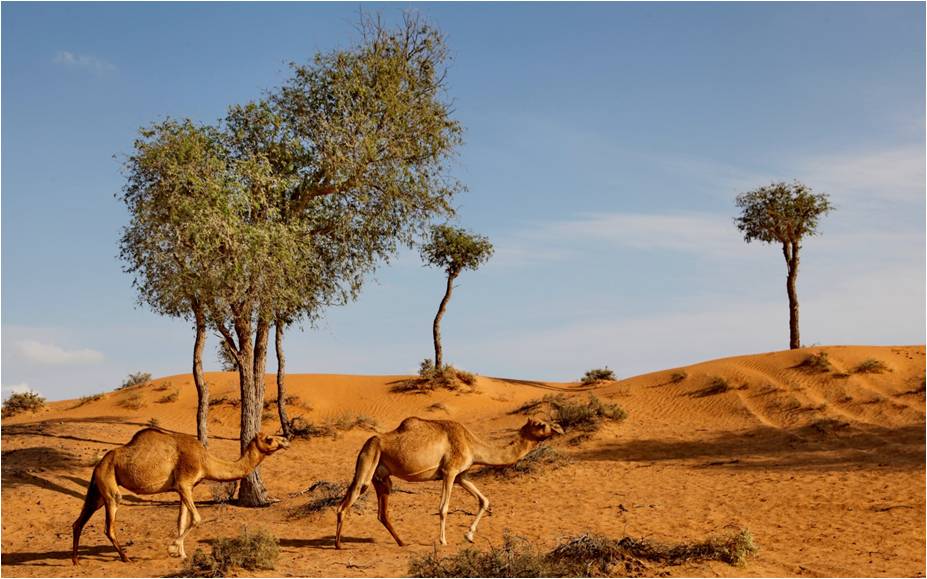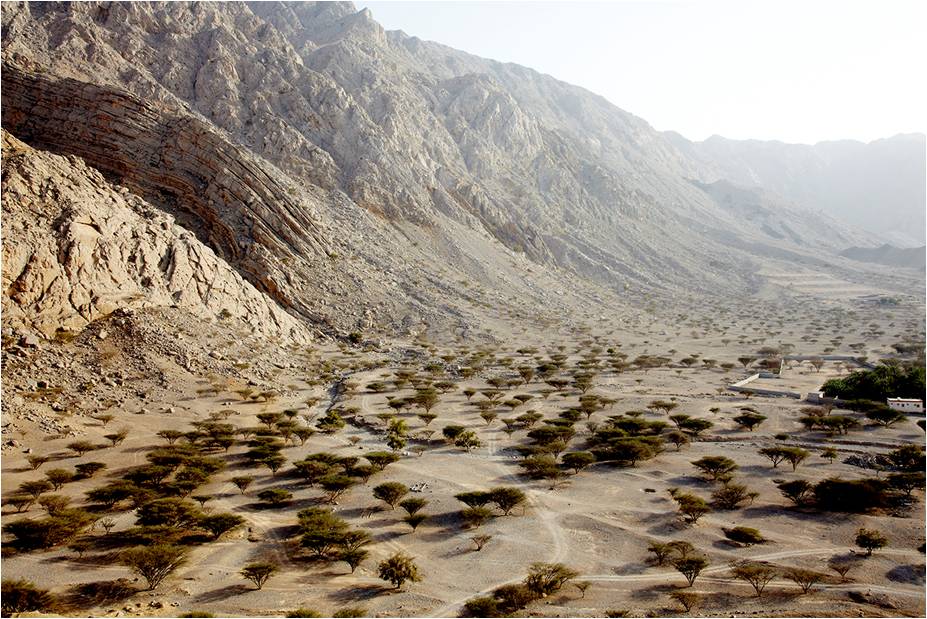About RAK

General Information

Ras Al Khaimah is one of seven emirates that joined to form the United Arab Emirates on December 2, 1971, with Ras Al Khaimah joining the UAE on February 10, 1972. The other six emirates are Abu Dhabi, Dubai, Sharjah, Ajman, Ras Al Khaimah, Umm Al Quwain, and Fujairah with Abu Dhabi being the capital of the UAE. The UAE has its own permanent constitution that illustrates the basic rules of the political system as well as the federation’s components and goals.
The emirate is governed by a local government under the leadership and guidance of Supreme Council Member and Ras Al Khaimah Ruler, His Highness Sheikh Saud Bin Saqr Al Qasimi, and Crown Prince Sheikh Mohamed Bin Saud Bin Saqr Al Qasimi.
Originally known as Julfar, Ras Al Khaimah’s history dates back several millennia with it being inhabited for as long. Over time, several historical and archaeological sites have been discovered throughout the emirate – dating from different time periods, including remnants of the Umm an-Nar Culture (3rd millennium BC). As recently as October 2012, ancient graves were found in the Emirate
Today, the emirate boasts many heritage and tourism sites and is also considered the most fertile agricultural land amongst all the emirates. Thus, in addition to an active tourism sector, Ras Al Khaimah also had a vibrant industrial sector. With many widespread development plans in the pipeline, Ras Al Khaimah has an ambitious vision and looks forward to a promising future teeming with development and excellence.
Geography
Ras Al Khaimah is situated in the northernmost part of the UAE between the Latitude of 25-26N and Longitude of 55-60 E. It is bordered from the South and the Northeast by Oman and shares borders with the emirates of Umm Al Quwain, Sharjah, and Fujairah. There are a number of islands which form part of the emirate, such as Greater and Lesser Tunbs, and it is the only emirate that overlooks the entrance to the Arabian Gulf.
Ras Al Khaimah has a vast coastline stretching to roughly 65 kilometres. The emirate is located in the far east of the Arab World, and it is the nearest emirate to the strategic Strait of Hormuz. It is also the nearest one to the Islamic Republic of Iran and the former republics of the Soviet Union.
Climate
Population
According to census estimates by the RAK Center for Statistics & Studies, the population reached 345,000 in 2015, RAK’s live births witnessed an increase pf 12%, i.e. 4557 new-borns in 2015 if compared witnessed a pared to 2014, while still births witnessed a remarkable decrease at a percentage of 32%, reaching 15 stillbirths.
Topography
Administrative Division
Ras Al Khaimah is divided into five administrative areas:
The First Area: Ras Al Khaimah City, which includes the old and modern areas of Ras Al Khaimah. This area stretches out to Al Jazirah Al Hamra, which is located 14 kilometres from downtown.
The Second Area: The Northern area, including Shaam, Ghalilah, Al Jeer, Al Ramas and Al Shamal.
The Third Area: The Southern area, including Massafi, Kedra, Al Huwaylat, Al Ghail, Uthun, Asema, Dafta and Rafak.
The Fourth Area: The Al Nakheel area, which was one of the prominent summer resorts in the past for the residents of Ras Al Khaimah and other emirates.
The Fifth Area: This area extends from Al Dhait South to Al Khatt town; it is a rural agricultural area that covers Al Kharran, which is located 13 kilometres from Ras Al Khaimah, Al Digdaga (23 kilometres), Al Humranya (28 kilometres), and Khatt (33 kilometres).
Environments in Ras Al Khaimah
There are diverse environments in Ras Al Khaimah, giving it a wealth of available business and housing options.
The Coast
La Côte
Die Küste
Побережье

There are sprawling sandy beaches in Ras Al Khaimah, and coral reefs adorn the extensive shoreline. The shoreline spreads from the Shaam area (the first point at the entrance of the Arabian Gulf near the Strait of Hormuz), to the borders it shares with the emirate of Umm Al Quwain. The waters of the Arabian Gulf are home to a diverse ecology of marine life. The emirates many fisheries make for vast bodies of water for fish incubation. Over 3,500 species of birds live in this environment, some of them migratory birds. Bird Life declared this coast an important area on the international bird migration route. The coastal area stretches for five kilometres on Al Jazirah Al Hamra and includes mudflats and bodies of sand.
Il existe à Ras Al Khaimah de vastes plages de sable et des récifs coralliens ornent le rivage qui s’étend.Le rivage s'étend de la région de Shaam (le premier point à l'entrée du golfe Persique près du détroit d'Ormuz), aux frontières qu'il partage avec l'émirat d'Umm Al Quwain.Les eaux du golfe Persique abritent une écologie diversifiée de la vie marine.Dans les émirats, les adeptes du secteur de la pêche construisent de vastes plans d'eau pour l'incubation des poissons.Plus de 3 500 espèces d'oiseaux notamment des oiseaux migrateurs, vivent dans cet environnement.Bird Life estime que cette côte est une zone importante sur la route internationale de migration des oiseaux.La zone côtière s'étend sur cinq kilomètres sur Al Jazirah Al Hamra et comprend des vasières et des étendues de sable.
In Ras Al Khaimah gibt es weitläufige Sandstrände und Korallenriffe, die die ausgedehnte Küstenlinie schmücken.Die Küstenlinie erstreckt sich vom Shaam-Gebiet (dem ersten Punkt am Arabischen Golf nahe der Straße von Hormuz) bis zu den Grenzen, die es mit dem Emirat von Umm Al Quwain teilt.Die Gewässer des Arabischen Golfs beheimaten eine vielfältige Ökologie des Meereslebens.In den Emirate gibt es viele Fischereien, die sich der Fischzucht widmen.Über 3.500 Vogelarten leben in dieser Umgebung, einige davon sind Zugvögel.Die Organisation Bird Life erklärte diese Küste zu einem wichtigen Gebiet der internationalen Vogelflugroute.Das Küstengebiet erstreckt sich in Al Jazirah Al Hamra auf über fünf Kilometer und umfasst Watt und Sand.
Рас-Аль-Хайма изобилует песчаными пляжами, а коралловые рифы украшают протяженную часть береговой линии.Береговая линия простирается от района Шаам (первая точка при входе в Персидский залив возле Ормузского пролива), по краям она граничит с эмиратом Умм-эль-Кайвайн.Воды Персидского залива богаты разнообразной флорой и фауной.В эмиратах существенные водные пространства заняты многочисленными рыбхозами с целью разведения рыбы.В этой среде проживает свыше 3500 видов птиц, некоторые из них являются мигрирующими.Организация Bird Life заявила, что данное побережье является важной зоной маршрута международной миграции птиц.Прибрежная зона простирается на пять километров в Аль-Жазира-Аль-Хамра и включает берег моря, заливаемый при приливе и обнажаемый при отливе, а также песчаные образования.
The Desert
Le désert
Die Wüste
Пустыня

Ras Al Khaimah’s landscape spans vast deserts and sand dunes that are known for their stunning, sweeping formations with reddish sand. And with its sprawling cover of desert plants and Ghaf trees (Prosopis cineraria), driving through the emirate or spending time discovering it provides for a beautiful and refreshing adventure. Ras Al Khaimah’s expansive terrain is brimming with a variety of wildlife, with houbara bustard birds stopping there during their winter migration. For years, these deserts used to teem with deer, desert foxes, and other animals; however with the change in the ecology and the environment, their numbers have begun to diminish; though the UAE Government and that of Ras Al Khaimah have put into place rules to protect there indigenous wildlife species.
Le paysage de Ras Al Khaimah s'étend sur de vastes déserts et des dunes de sable connues pour leurs superbes formations majestueuses au sable rougeâtre.Aussi, avec ses plantes et ghaf (Prosopis cineraria) qui s’étendent sur le désert, la traversée de l'émirat ou le temps passé à le découvrir, constitue une belle et rafraîchissante aventure.Le vaste terrain de Ras Al Khaimah déborde d'une faune variée, avec des oiseaux houbara qui s'y arrêtent durant leur migration hivernale.Pendant des années, ces déserts couvraient des cerfs, des renards du désert et d'autres animaux ; Cependant, avec le changement dans l'écologie et l'environnement, leur nombre a commencé à diminuer bien que le gouvernement des EAU et celui de Ras Al Khaimah aient mis en place des règles pour protéger leurs espèces sauvages indigènes.
Die Landschaft von Ras Al Khaimah ist gekennzeichnet von weiten Wüsten und Sanddünen, die für ihre atemberaubenden, geschwungenen Formationen mit rötlichem Sand bekannt sind.Die ausgedehnte Verbreitung von Wüstenpflanzen und Ghaf-Bäumen (Prosopis cineraria) machen eine Fahrt durch das Emirat und einen Aufenthalt zu einem schönen und interessanten Abenteuer.Im ausgedehnten Terrain von Ras Al Khaimah gibt es eine Vielzahl von Wildtieren und Houbara-Trappenvögel, die sich während ihrer Winterwanderung dort aufhalten.Seit Jahren wimmelt es in diesen Wüsten von Rehen, Wüstenfüchsen und anderen Tieren; mit der Veränderung der Ökologie und Umwelt haben ihre Zahlen abgenommen; die Regierung der VAE und Ras Al Khaimah haben jedoch Vorschriften erlassen, um dort einheimische Tierarten zu schützen.
В ландшафте Рас-Аль-Хайма присутствуют обширные пустыни и песчаные дюны, известные из-за своих удивительных, виляющих образований из красноватого песка.А благодаря тому, что этот эмират покрыт пустынными растениями и деревьями-гафами (Prosopis cineraria), поездка по нему или время, проводимое в его изучении, представляет собой бодрящее приключение.Обширная территория Рас-Аль-Хайма – ареал обитания для богатого животного мира, в том числе и для дроф-красоток, останавливающихся здесь во время зимней миграции.На протяжении многих лет эти пустыни служили домом для оленей, пустынных лисиц и других животных. Однако с изменениями экологии и окружающей среды их численность стала сокращаться. В этой связи Правительство ОАЭ и Правительство Рас-Аль-Хайма приняли законы, направленные на защиту этих редких представителей животного мира.
The Mountains
Les montagnes
Die Berge
Горы

Mountain areas, especially those next to the sea and shore, are characterised by their great height and stone facades. They boast breath-taking natural scenery and low temperatures in both, summer and winter, making the emirate the ideal summer destination. Many rare plants grow in the area, which also feature captivating wildlife, such as Arabian leopards and caracals.
Les zones de montagne, en particulier celles qui jouxtent la mer et la côte, sont caractérisées par leur grande hauteur et leurs façades en pierre.Ils offrent des paysages naturels à couper le souffle et des températures basses en été comme en hiver, faisant de l'émirat la destination estivale idéale.La région abrite plusieurs plantes rares une faune captivante, comme les léopards et les caracals arabes.
Die Berggebiete, vor allem jene am Meer und an der Küste, zeichnen sich durch ihre große Höhe und Steinfassaden aus.Sie bieten atemberaubende Naturlandschaften und verzeichnen sowohl im Sommer als auch im Winter niedrige Temperaturen und machen das Emirat zum idealen Sommerziel.Viele seltene Pflanzen wachsen in der Gegend, in der es auch faszinierende Wildtiere wie arabische Leoparden und Karakale gibt.
Гористые области, в особенности те, что расположены сразу за морем и береговой линией, отличаются большой высотой и наличием отвесных каменистых скал.Это захватывающие дух естественные места с низкими температурами, как зимой, так и летом, в силу чего этот эмират является идеальным туристическим направлением в летний сезонВ эмирате произрастает множество редких растений, и обитают поражающие воображение представители животного мира, такие как арабские леопарды и пустынные рыси.
The Plains
Les plaines
Die Ebenen
Равнины

Samar trees (Acacia tortilis) and savannah grow in plains at the foot of the mountains. These plains are vast and represent an important environment for human life, with certain types of migratory birds reproducing there. Rich in monuments and historical forts, this area is full of historically important sites.
Les arbres à Samar (Acacia tortilis) et la savane poussent dans les plaines au pied des montagnes.Ces plaines sont vastes et représentent un environnement important pour la vie humaine, avec certains types d'oiseaux migrateurs qui s'y reproduisent.Riche en monuments et en forts historiques, cette zone regorge de sites historiques importants.
In denen Ebenen, am Fuß der Berge, gibt es Hakendornbäume (Acacia tortilis) und Savannen.Es sind riesige Ebenen, die eine wichtige Umgebung für das menschliche Leben darstellen und in denen bestimmte Arten von Zugvögeln brüten.Dieses Gebiet mit seinen vielen Denkmälern und historischen Forts ist reich an wichtigen geschichtsträchtigen Stätten.
У подножия гор в равнинах произрастает акация крученая (Acacia tortilis) и саванная растительность.Эти равнины весьма обширны и являются важной средой обитания человека, также обеспечивая кров для некоторых видов мигрирующих птиц, размножающихся здесь.Благодаря множеству памятников и старинных фортов этот эмират изобилует исторически-важными местами.
The Rural Lands
Les terres rurales
Ländliche Gebiete
Сельскохозяйственные земли

With agricultural land spanning vast areas, greenery in Ras Al Khaimah is nestled into mountain tops and is a refuge for migratory birds as well. These fertile lands gave the emirate significant importance in the past, providing the UAE markets with plentiful produce, and other emirates with food. In addition, this environment is vitally important for the population.
Avec des terres agricoles couvrant de vastes zones, la verdure à Ras Al Khaimah est nichée dans les sommets des montagnes et constitue également un refuge pour les oiseaux migrateurs.Ces terres fertiles ont donné à l'émirat une importance significative dans le passé, fournissant aux marchés des Émirats Arabes Unis des produits abondants, et de la nourriture à d'autres émirats.En outre, cet environnement est d'une importance vitale pour la population.
Die großen Gebieten mit landwirtschaftlichen Nutzflächen von Ras Al Khaimah liegen in den Bergen und sind ein Zufluchtsort für Zugvögel.Diese fruchtbaren Flächen hatten in der Vergangenheit eine große Bedeutung für das Emirat, da sie die Märkte in VAE mit vielen Erzeugnissen und andere Emirate mit Lebensmitteln versorgten.Darüber hinaus ist dieses Umfeld für die Bevölkerung von entscheidender Bedeutung.
Поскольку сельскохозяйственные земли занимают обширную территорию, зеленые насаждения в Рас-Аль-Хайма расположены на вершинах гор и также служат убежищем для мигрирующих птиц.Эти плодородные земли в прошлом имели важное значение для эмирата, поскольку обеспечивали рынки ОАЭ и другие эмираты разнообразными выращиваемыми продуктами питания.Кроме того, такая окружающая среда жизненно необходима для населения.

